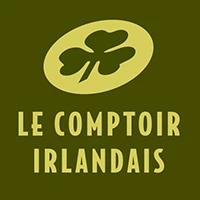Kilts & Traditional Clothing
- Women Clothing Collection
- Men‘s Clothing Collection
- Children
- Our fashion selection
- Kilts & Traditional Clothing
- Homewear
- Spring-Summer 2025 Collection
- Autumn-Winter 2025/2026 Collection
The kilt: a Celtic garment
Like whisky, haggis or even the legend of Loch Ness, the kilt is often associated with Scotland, but it actually represents Celtic culture in general. We therefore find the kilt in Ireland, Wales and Brittany!
Its name comes from the Gaelic "filladh beag" and was originally a large woollen sheet that could reach 7 meters in length, wrapping the body and folded over the shoulder. For reasons of practicality, the large kilt is abandoned in favour of the "small kilt" worn at the waist that we know today.
It was in 1782, when the English law of the "Dress Act" prohibiting Scots from wearing the kilt was over, that it became the symbol of the Scottish people.
If the kilt was mainly worn by men, it is nowadays also worn by women and on all occasions: weddings, sports competitions or even as a costume.
As the kilt has no pockets, it can be combined with a leather sporran, a central element of the traditional Scottish costume. For a complete outfit, don't forget the essential accessories: the kilt goes with a shirt, a spencer and a nice pair of high socks. It is also accessorized with flashes, kilt pins and beret.
Tartans and their meaning
The history of Scotland is extremely rich and has been passed down through its many clans. Each of these great families had a name related to the lands they occupied as well as a specific tartan kilt allowing them to be differentiated.
The Heritage of Scotland tartan is the most emblematic of Scotland. It consists of blue and purple bands, edged in white and black and is worn regularly during sports competitions or Scottish dancing.
The Royal Stewart tartan is perhaps the most famous across the world with its iconic red stripes edged in blue, black and yellow. This is Queen Elizabeth II's personal tartan worn on many official uniforms, but is also very common in punk-rock culture.
With its green and blue bands edged in black, the Blackwatch tartan refers to the "Black Watch", the Scottish Highland infantry regiment.
Unlike the other cities, the Granite Grey tartan does not belong to any Scottish clan, it refers to the hard granite rocks of the mountains of Royal Deeside.






